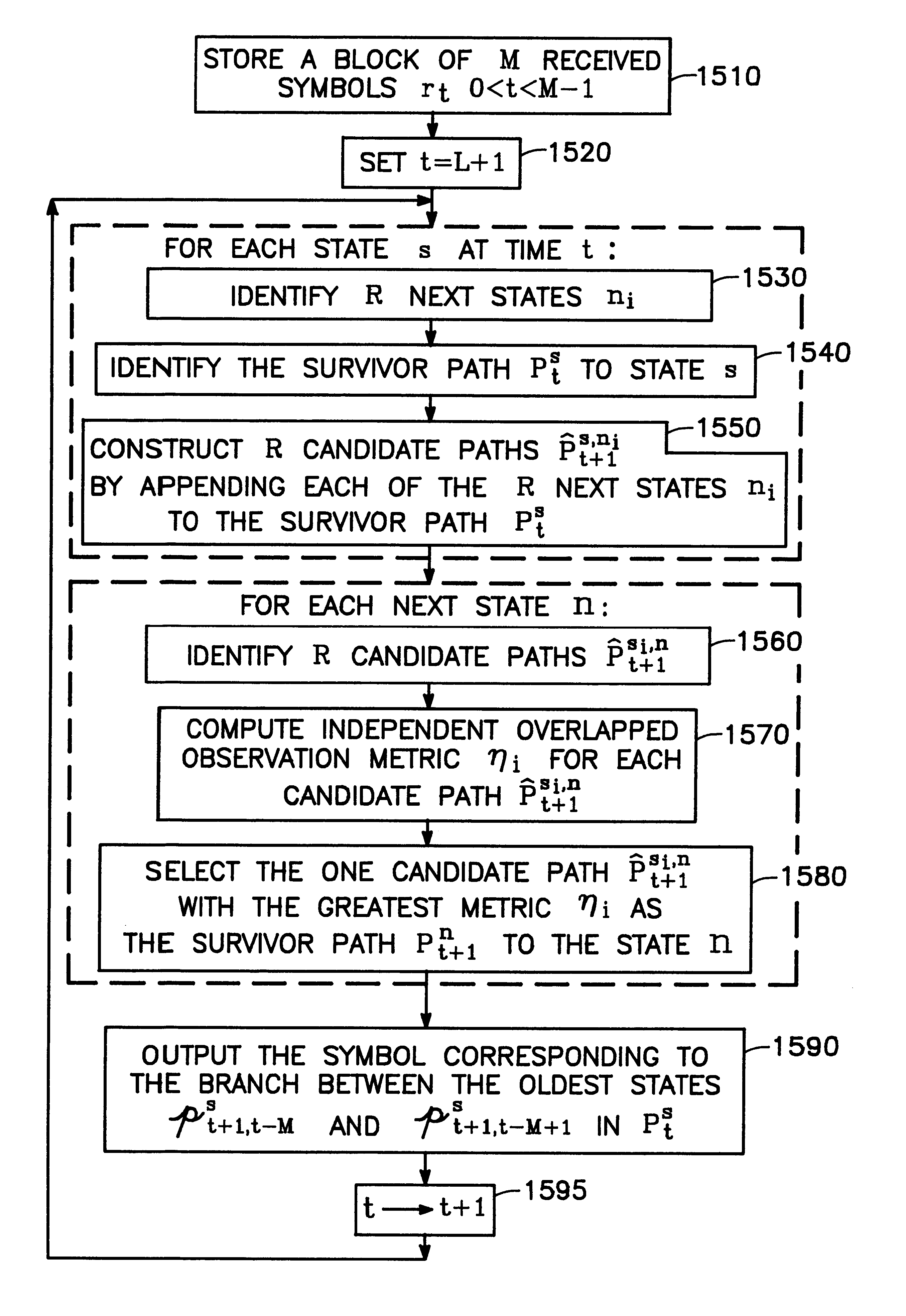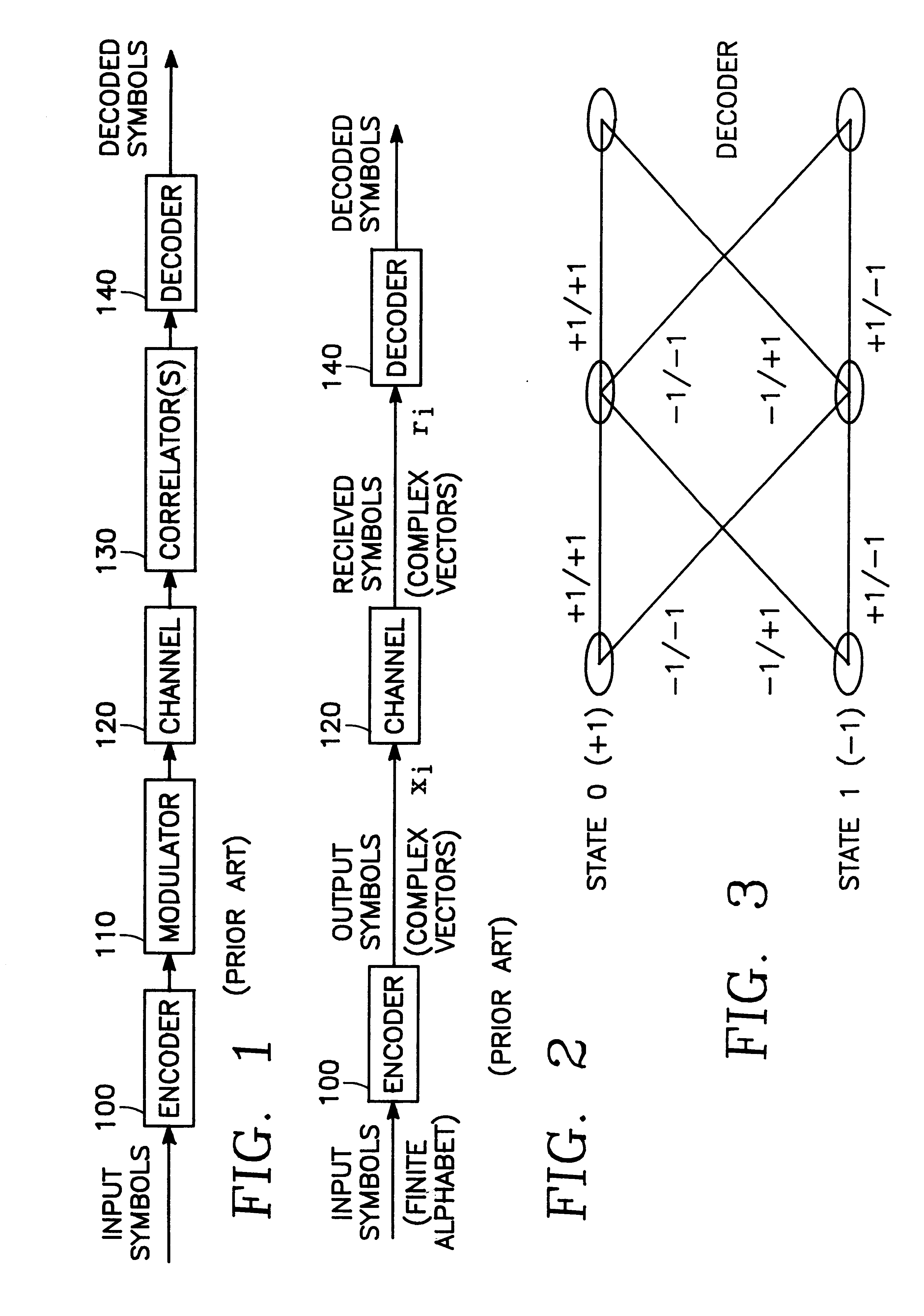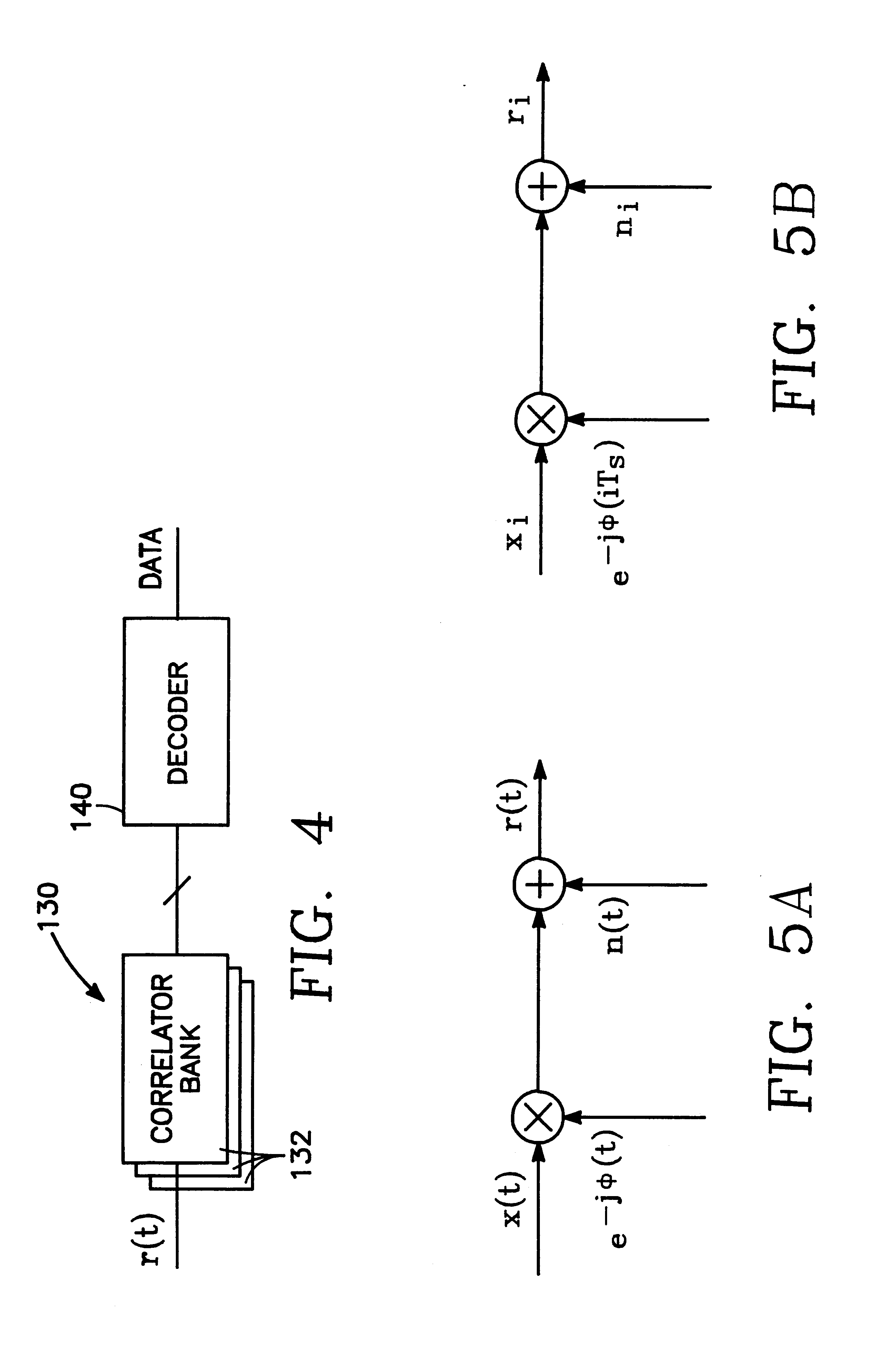Method for noncoherent coded modulation
a non-coherent code and modulation technology, applied in the direction of coding, amplitude demodulation, code conversion, etc., can solve the problems of difficult to find the exact model of the phase process, difficult to achieve the effect of maximum overlap and convenient decoder implementation
- Summary
- Abstract
- Description
- Claims
- Application Information
AI Technical Summary
Benefits of technology
Problems solved by technology
Method used
Image
Examples
example 14.1
Referring to FIG. 23, we would like to decode a rate 1 / 2, K=3 code with BPSK modulation, and we choose L=3. The input to the decoder is as shown, where the numbers are real for simplicity. The symbols are in general complex vectors.
Initial conditions: 0 is received for t<0 and the state of the encoder is 0 at time t'-1, where all paths originate (it is not needed for the algorithm operation, only for the example). For t<2 we only compute the metrics--there are no decisions. At t=0:
F.sub.0.sup.0 ={0,0,0,0},
H.sub.0.sup.0 =(-0.5-1.5).sup.2 +(-0.5-1.5+0.5+0.8).sup.2 +(-0.5-1.5+0.5+0.8-0.9-0.9).sup.2 =10.74,
F.sub.0.sup.1 ={0,1,2,0},
H.sub.0.sup.1 =(0.5+1.5).sup.2 +(0.5+1.5-0.5+0.8).sup.2 +(0.5+1.5-0.5+0.8+0.9+0.9).sup.2 =26.1,
C.sub.0.sup.0 ={0,0}, G.sub.0.sup.0 =(-0.5-1.5).sup.2 =4,
C.sub.0.sup.1 ={0,1}, G.sub.0.sup.1 =4.
Step 1,2: s=0.fwdarw.m=0 and s=1.fwdarw.m=2.
F.sub.1.sup.0,0 ={0,0,0,0,0}, H.sub.1.sup.0,0 =10.74+(0.5+0.8-0.9-0.9-1-1).sup.2 =16.99,
F.sub.1.sup.1,2 ={0,1,2,0,0}, H.sub.1.s...
PUM
 Login to View More
Login to View More Abstract
Description
Claims
Application Information
 Login to View More
Login to View More - R&D
- Intellectual Property
- Life Sciences
- Materials
- Tech Scout
- Unparalleled Data Quality
- Higher Quality Content
- 60% Fewer Hallucinations
Browse by: Latest US Patents, China's latest patents, Technical Efficacy Thesaurus, Application Domain, Technology Topic, Popular Technical Reports.
© 2025 PatSnap. All rights reserved.Legal|Privacy policy|Modern Slavery Act Transparency Statement|Sitemap|About US| Contact US: help@patsnap.com



